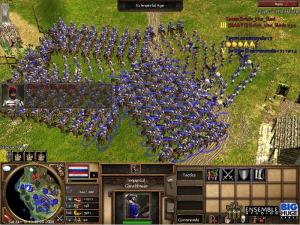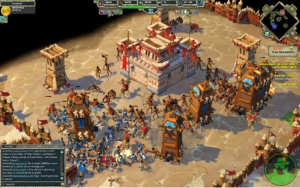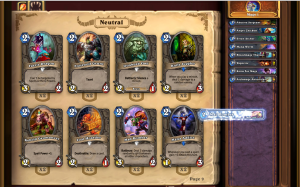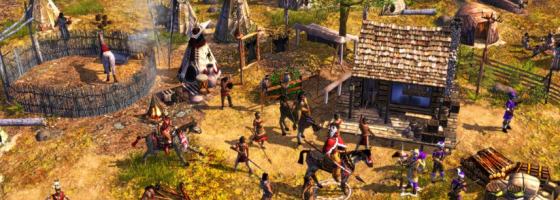When we talk about classic RTS series, one of the best was Age of Empires. Developed by Ensemble Studios, the series took a more historical and complicated look at RTS compared to Starcraft or Command and Conquer. But what I find intriguing is how the series was the first to have actual Meta game progression predating League of Legends and Team Fortress.
Age of Empires 3 and Age of Empires Online both were developed this way with the former being the last game in the series from Ensemble and the latter developed as a free to play game with different philosophies of Meta game that are interesting to examine.
A Home Away from Home:
Age of Empires 3 and Online’s Meta game progression was tied to a system called the home city. The home city in AOE 3 represented your home city obviously, as you were a colony. The city screen had different buildings representing various aspects of your faction: Military, economy and more.
During a match, as you killed enemies and captured points on the map, you would earn points that would allow you to request shipments from the home city. And the home city became the Meta game progression after each match. As you played online and won or lose matches, you would earn experience that could level up your city and unlock upgrades. The upgrades ran the gambit of allowing you to ship more civilians, get extra resources and even unlock unique units or upgrades that were only possible via the city.
Each faction had its own unique home city with shipments to boot, giving you a lot of variety in terms of play style. You could focus on rushing and design your city with extra unit shipments and military upgrades. Or you could focus on the economic and try to beat your enemies with more resources and quicker civilians.
As I mentioned further up, this was I believe the first time that a non MMO had in game progression. What’s important to point out is that while you had free reign to create your home city, you were choosing from set values IE: If two people choose the same shipments, they would respond the same way to both of them and home cities of the same faction had the same exact possible shipments and progression to choose from.

Age of Empires 3 had Meta Game content in the form of the home cities, but featured set rules of how far you could alter a civ.
What’s interesting is that the home city concept made Age of Empires 3 feel more like a CCG with how players could create “decks” of home cities to use online.
This idea of being able to personalize your units and strategies became the selling point of Age of Empires Online. However, a differing design philosophy made it more of a dissuader instead.
+5 to Rushing:
Age of Empires Online was not developed by Ensemble who sadly was shut down before its development. Developed originally by Robot Entertainment until Gas Powered Games took over, the idea was to create a F2P MMORTS using the Age of Empires brand.
The concept of a home city returned but this time it was more akin to Farmville and other social games as you could decorate it more and you would always return to it after a match. Speaking of matches, AOEO differed from other games in the series by featuring a campaign made up of both AI skirmishes and unique quests and challenges.
Completing challenges would net you equipment which would be stored back at your home base. The equipment was similar to an ARPG with gear of various rarities and stats that could be assigned to units or buildings. This gear was very important as you could enhance units; make civilians gather resources quicker and even produce units cheaper.
As you can probably guess, this is where the monetization first appeared. You were locked from using higher tier equipment unless you bought the premium version of the civ, priced at an outrageous $20.00 for the time. And yes, you had to do this for each civ in the game. They also introduced “raid content” in the form of fighting massive armies or dealing with an enemy with a huge advantage.
One such advantage was that fighting later missions, the AI would sometimes throw “elite” units at you. These guys were larger and much stronger than the regular units: Wiping out their counters easily and requiring a lot more effort to take down.

AOEO’s equipment upgrades allowed players to subvert the RTS balance and made the game very easy for people with money to burn.
I should point out that the number of equipment and customization was far greater in AOEO than in AOE 3 and the developers similar to World of Tanks had a big restructuring which occurred after Gas Powered took over.
The change rebalanced a lot of the design and made it possible to earn premium currency through play, allowing someone to eventually get a premium civ just by playing.
But history shows that AOE 3 was looked at much favorably than AOEO despite the latter having a deeper customization system and this has to do with the limits of Meta game progression and its impact on game balance.
Throwing Numbers out the Window:
Meta game progression’s appeal is about providing value to people who keep playing: Letting them continue to gain power or items in an attempt to keep the game from becoming stale. It’s what basically transformed Team Fortress 2 from an amazing game into a blockbuster.
But AOEO had two major differences going against it compared to Team Fortress 2. First was that the game’s progression was pitched as an upgrade system and not a side grade. The beauty of TF 2 was that Valve made it so that items were not designed to be inherently better than each other but offer different strategies and alternatives.
With AOEO, you were buying and finding items designed to make your side better. This made the difficulty of the game swing wildly which is not good in a RTS. Not having good gear would make it impossible to win despite having a winning strategy, something no RTS fan wants to hear.

Games that feature a Meta Game are difficult to balance as it will change over time due to new content or expert players figuring things out.
And second was that because of the items and how powerful they were, the balance of the design was ruined which is not something you want in a strategy title.
With enough items you could make units resistant to their counters, increase resource gather rates without the need of researches and essentially get all the improvements that RTS designers were against as they made balance impossible.
This is why games that have Meta progression go for a soft touch such as League of Legends with their rune stones and talent trees. You don’t see huge numbers of improvement individually, but they do add up. And regardless, none of the upgrades will radically change how a champion is played such as giving a support character the attack strength of a jungler.
Pay to Rush:
The lesson that designers can take from AOEO is that while Meta content is a great thing and key to keeping a game around, you need to be careful with how far you go in making them stand out. Being able to get content that is all around better and locked to premium purchases, will ruin the balance of the game.
This is one area that will be interesting to see where Hearthstone goes as I’ve talked about how there aren’t enough cards in the game to have a variety of strategies and decks. But the recent expansion while not adding a lot of cards, did add those that radically changed the Meta game. Blizzard will need to be careful with how many paid changes they will add to the game as the game already skirts that line of being Pay to Win.
If you’re going to have content that affects the gameplay, it’s better to make it available to all players and not just those with the most money. Competition is all about balance, not about the bigger paycheck which AOEO learned the hard way.


